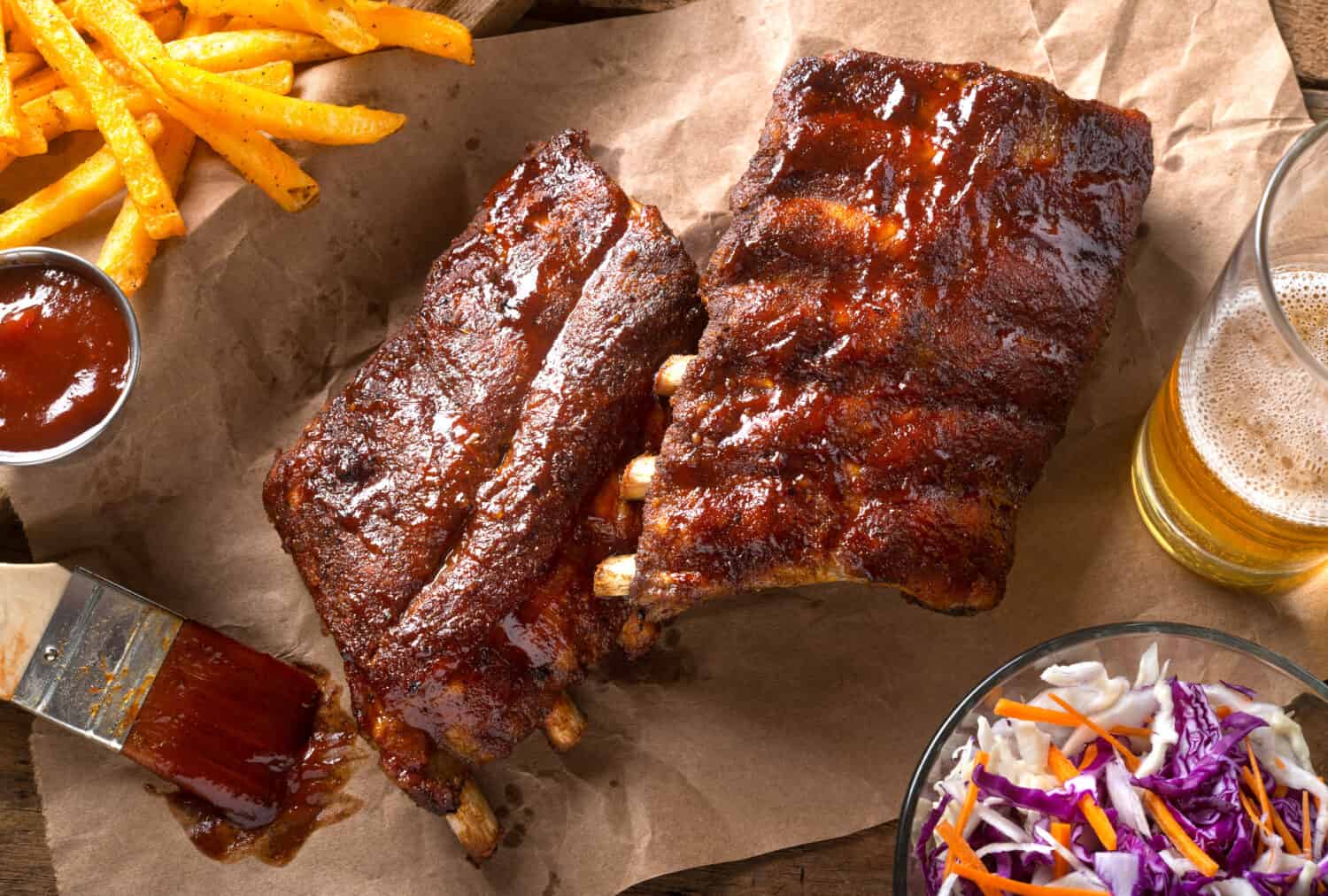Have you ever wondered about the differences between Saint Louis versus Baby Back Ribs? These pork-based dishes may seem the same, especially given that they come from the same animal. However, the two types of ribs differ in three major ways. They are shaped differently, prepared differently, and have different amounts of meat/fat content. Saint Louis ribs come from the pig's belly, just below the breastbone of the pig. Meanwhile, Baby Back cuts come from the rib cage, a little lower on the pig. Read on as we learn more about how to prepare these delicious pork rib dishes.
In this post, you’ll learn some of the history of these dishes and how they came to be. We’ll discuss the best methods for preparation, and get some ideas on presentation as well. Learn all about how the process affects the flavor and the nutritional profile of the dish in question. Never again will you get Saint Louis versus Baby Back cuts confused for one another. By the end of this, you’ll be an absolute expert, so let’s get into the meat of it.
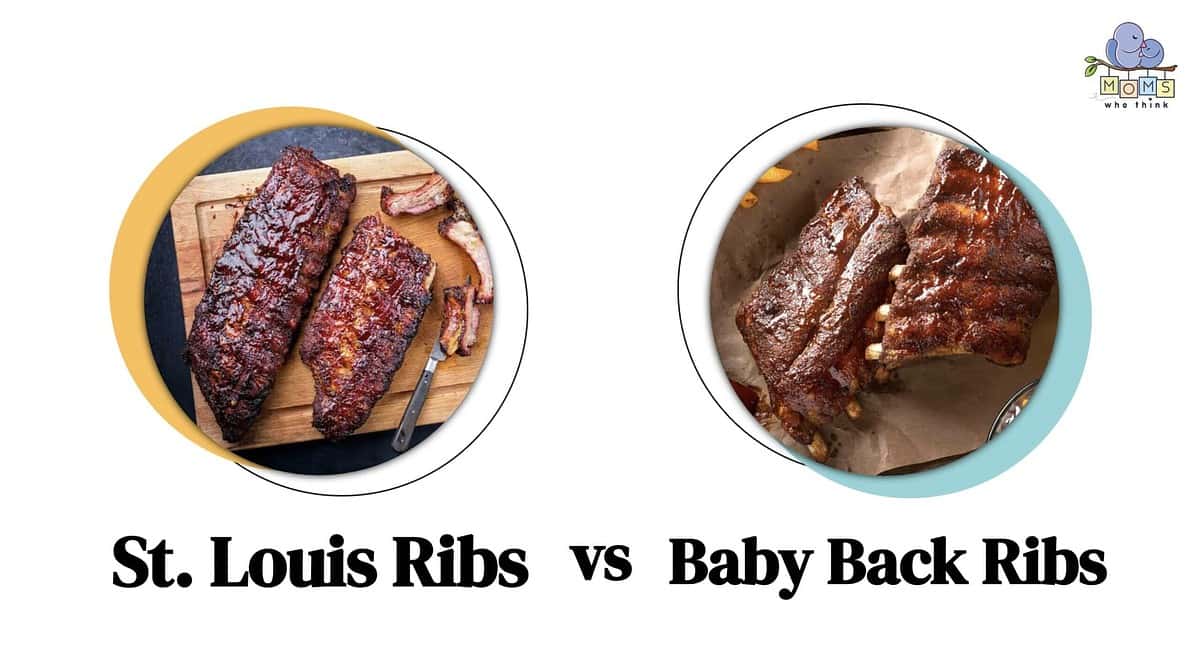
St. Louis vs. Baby Back Ribs: What Is The Difference?
The difference between Saint Louis vs. Baby Back cuts comes down to three things. They have different shapes, different amounts of meat/fat, and a unique preparation that impacts their taste. While both are pork ribs, these are variations of the classic barbeque and therefore different dishes.
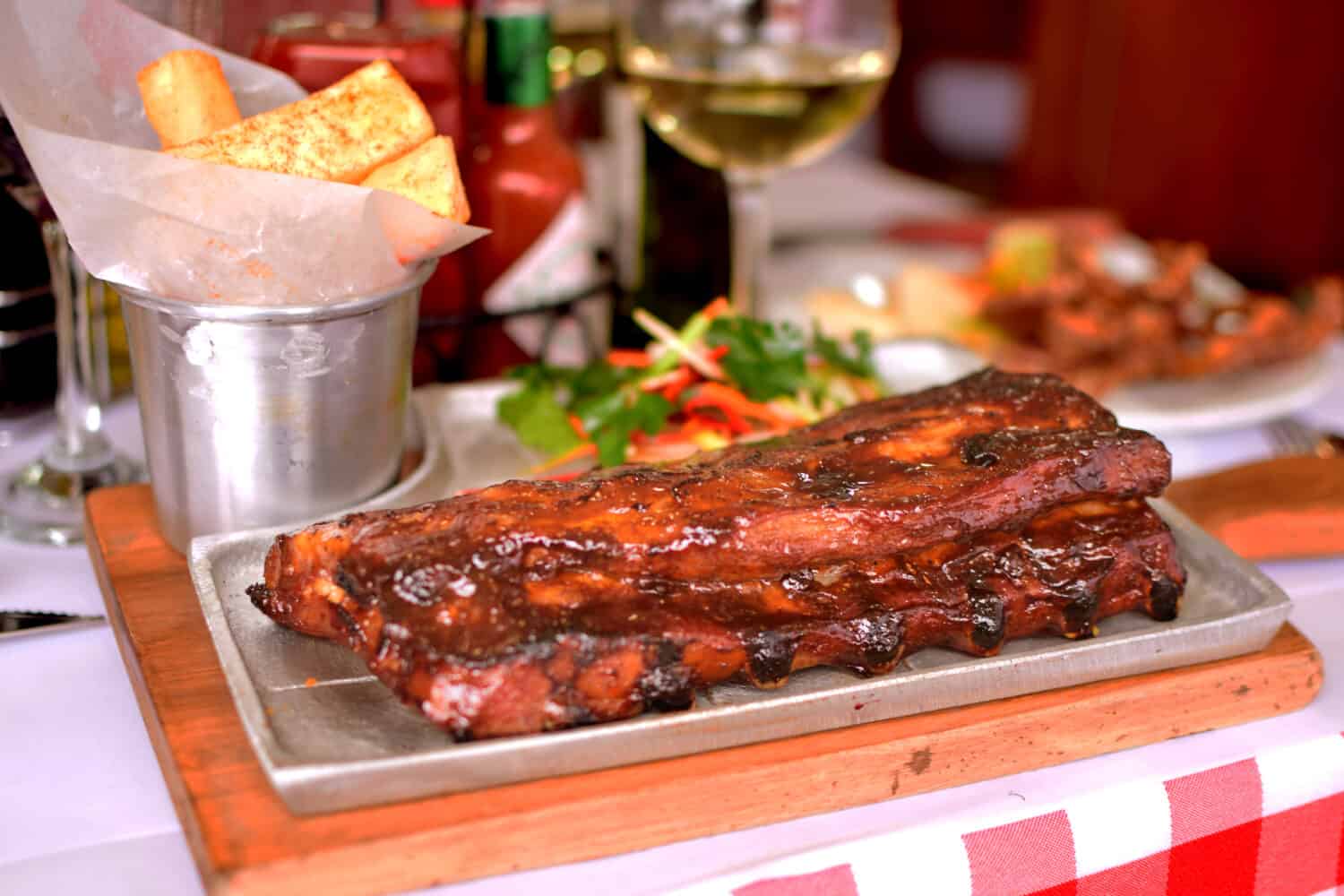
©RaulACastellanos/Shutterstock.com
What Are St. Louis Ribs?
Saint Louis ribs come from the pig's belly, they are flat and meaty. Unlike other methods of meat preparation, the Saint Louis recipes are set apart by the process of first grilling, and the sauce marinating the meat. We'll get more into the recipe for Saint Louis ribs in a second, but the recipe typically includes ingredients like chili powder, paprika, cayenne powder, and onion powder. This style of cooking cuts down the overall time it takes to make Saint Louis ribs in comparison to other styles of pork rib barbecue (via Masterclass).
What Are Baby Back Ribs?
Baby back cuts come from, you guessed it, the back of the pig in question. Because of their structural origin, they are more curved than the Saint Louis cut, with a leaner meat content, but still lots of flavor. in terms of their method of preparation, the Baby Back cut can be baked, done on the grill, or smoked. They are made with a dry-rub spice combination and typically served with either sweet or savory barbeque sauce. We'll get more into recipes in a moment, so keep on reading.
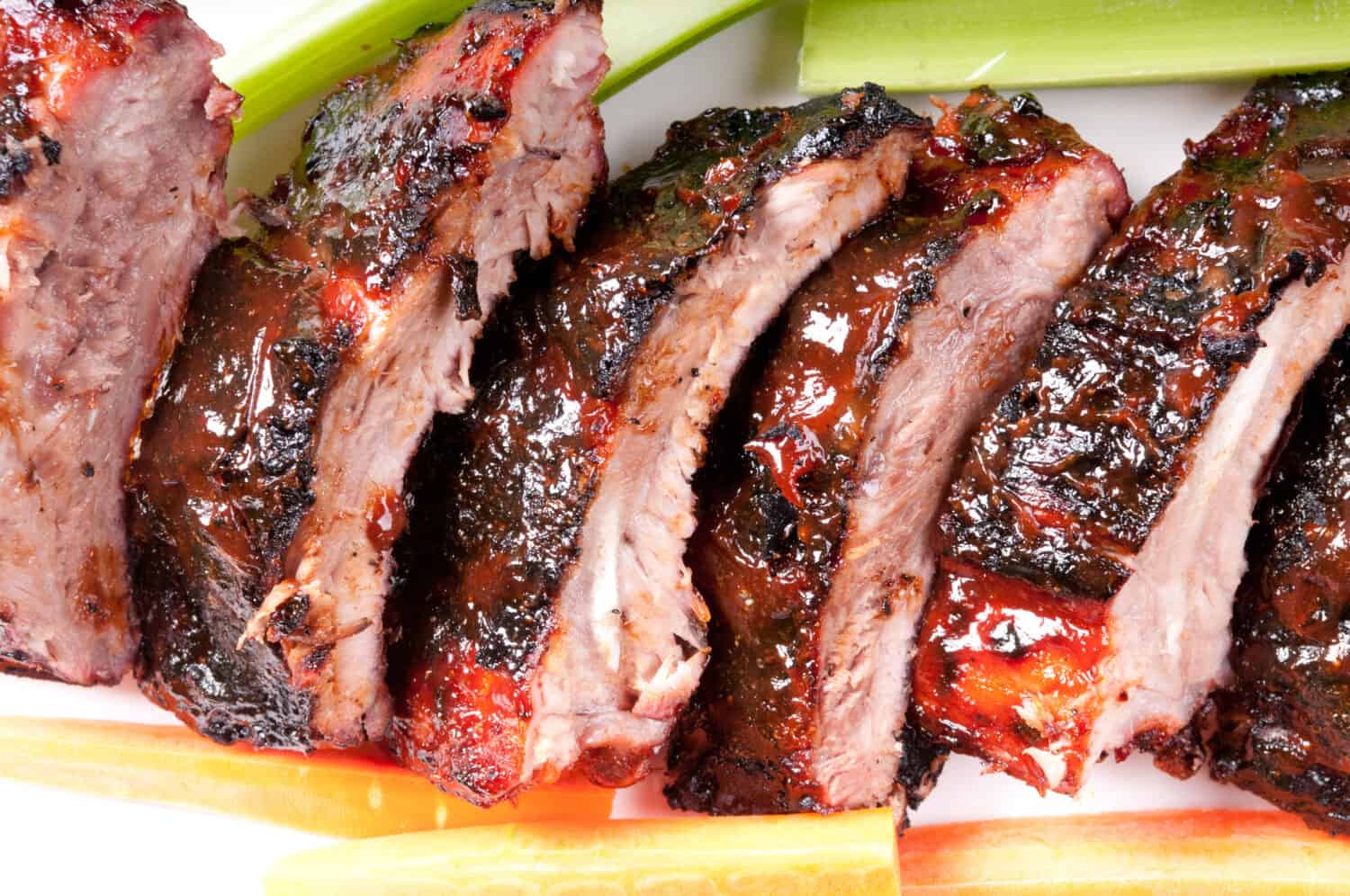
©Wirestock Creators/Shutterstock.com
History And Origin of St. Louis And Baby Back Ribs
When discussing the origins of Saint Louis vs. Baby Back cuts, it's important to look at the history of barbeque as a whole. Areas in the States that are famous for barbeque include the Carolinas, Texas, Kansas City, and Memphis. These regions have all kinds of influences from the Caribbean, Spanish Imperialism, and European immigrants. Barbacoa styles of cooking meat, which involved an indirect flame, green wood, and smoke, were historically used on the first islands that Christopher Columbus sailed to. These methods followed the conquerers, who brought it to the new world, and parts that would eventually become the South (via Smithsonian Magazine).
Some of these areas would go on to become regional meat-packing hubs, so they had a lot of meat products to work with. As different styles of barbeque developed, so did major landmarks in barbeque history. The first barbeque restaurant opened in Kansas City in 1908, in 1926 Louis Maull of Saint Louis, MO, began selling what he coined to be the first barbeque sauce. In the 1930s, meatpackers in the region began to cut pork ribs from the belly, not just the rib cage. They called these flatter, more rectangular cuts the St. Louis-style of rib. Baby back cuts were also popular coming from the back of the pig, and reflecting another style of barbeque that involved dry-rub instead of sauce marination.
How To Make St. Louis vs. Baby Back Ribs
St. Louis Ribs Recipe
This recipe from Delish calls for at least 3 pounds of spareribs, butter, brown sugar, and kosher salt. Gather your spices, because you'll need garlic powder, onion powder, oregano, black pepper, chili powder, cayenne pepper, mustard powder, and a heaping of barbeque sauce. Note that this recipe only uses an oven, but a traditional recipe would involve grilling the dry-rubbed meat before transferring it to the oven and slathering it with barbeque sauce. For this recipe, you'll need to preheat the oven to 300° Fahrenheit and prepare a baking sheet with aluminum foil. Get your cut of Saint Louis ribs ready by removing any membrane with a knife. In a separate bowl, combine your seasoning and then apply this mixture to your St. Louis rib rack until it is entirely coated. Place cubed butter over the ribs, and wrap the whole beautiful mess up in the foil. This will go on a baking sheet, and into the oven. Bake for around 2 and 1/2 hours, before switching from bake to broil. Unwrap your tinfoil ribs and brush with your barbeque sauce of choice. Broil for about 5 minutes until the added sauce begins to caramelize. Cut and enjoy!
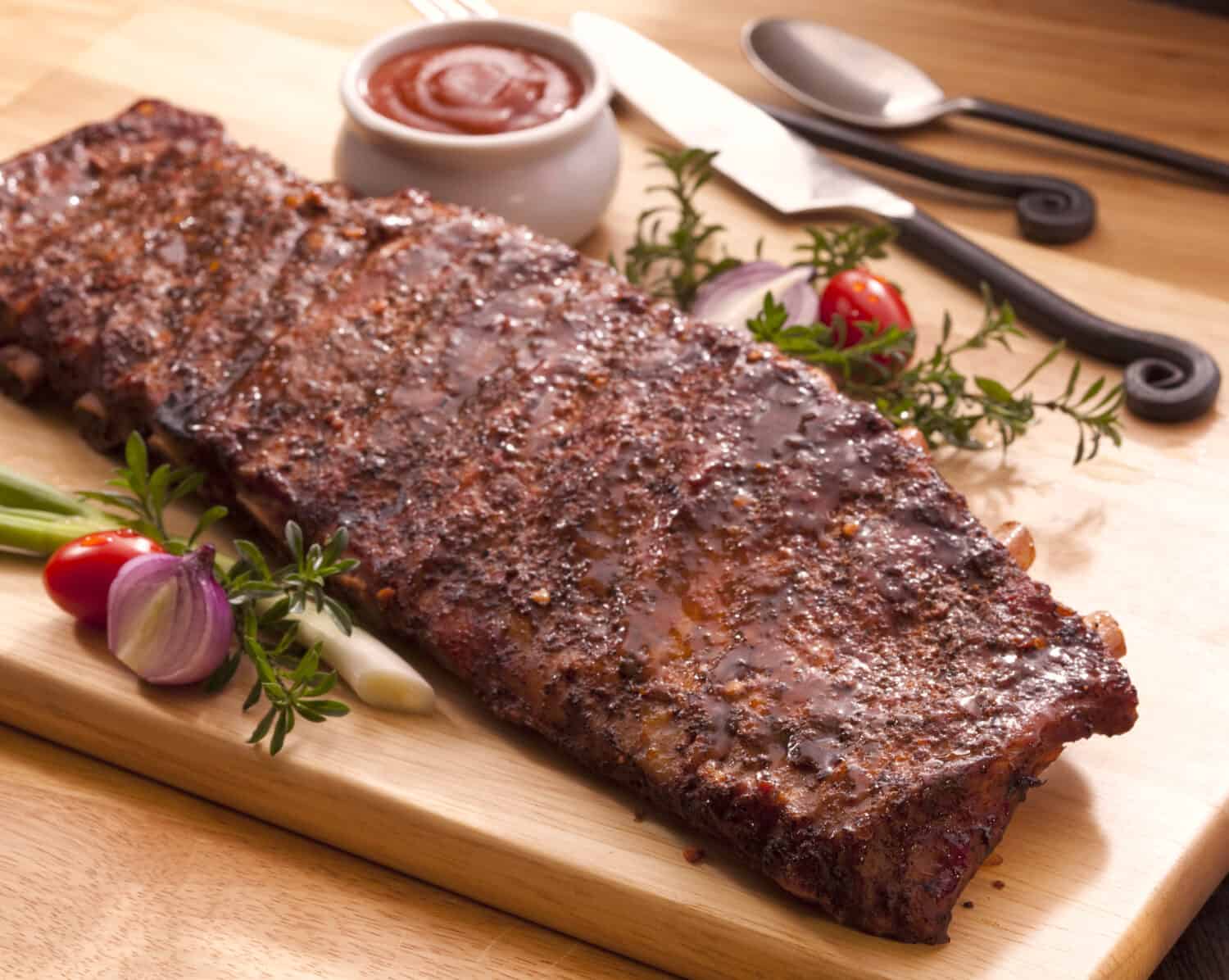
©Jim Bowie/Shutterstock.com
Baby Back Recipe
To make the baby back cut, you'll need a rack of baby back, white sugar, brown sugar, and salt. Gather ancho chile powder, ground black pepper, cayenne pepper, dry mustard, chipotle pepper, ground cumin, and barbeque sauce. Preheat the oven to 250° Fahrenheit, combine your dry rub ingredients, and prepare a baking sheet. You'll want to ensure enough airflow through the meat by pricking the rack with a knife before coating both sides in your dry rub. Seal up your rack with the aluminum foil, and bake for around 2 hours. It should be cooked all the way through, and decidedly tender to the taste. Once it has cooled, open it up and coat it with barbeque sauce before putting it back in the oven to cook for another 10 minutes. This part can be redone up to four times to ensure full flavoring and tenderness (via Allrecipes). Serve it up, and enjoy the fruits of two hours of labor! Check out some of these recipes:
- Kansas City Style Pork Back Ribs
- Honey Glazed Baby Back Ribs Recipe
- Sweet and Sour Baby Back Ribs Recipe
- Crock Pot BBQ Ribs
Nutritional Value Comparison of St. Louis vs. Baby Back Cuts
As you can see in this handy chart comparison, there are some incremental differences in the nutritional profile of Saint Louis versus baby back cuts. Saint Louis cuts are meatier, with a higher fat content than the leaner Baby Back cut. They have a larger calorie count, and more cholesterol than Baby Back cuts as well. It's important to know that the way in which they are seasoned will impact things like sugar and sodium content too. Making them on your own will allow you to moderate certain ingredients.
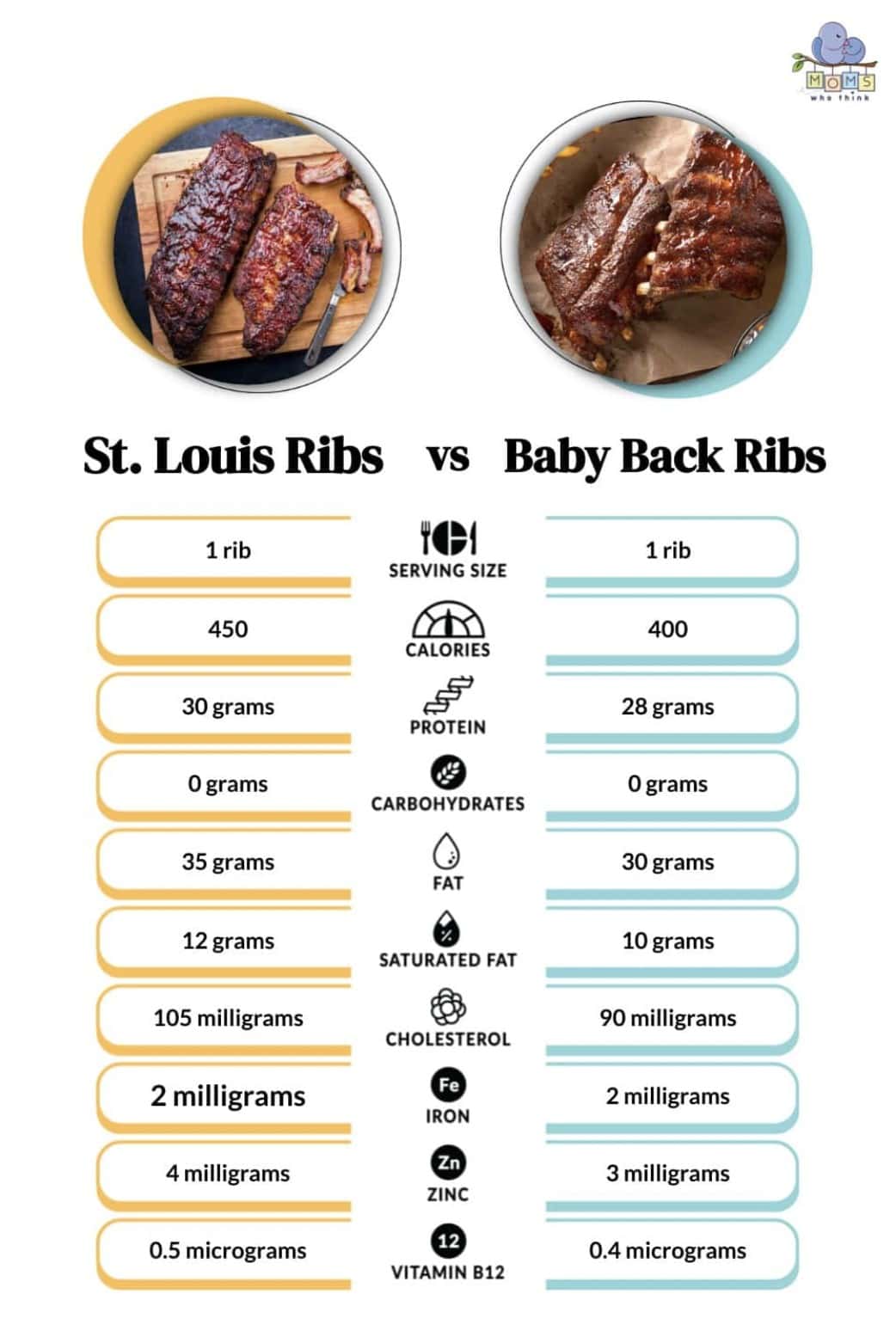
St. Louis vs. Baby Back Cuts: Are They The Same Thing?
While both Saint Louis and Baby Back cuts of rib come from pigs, they are decidedly different cuts of meat. You wouldn't call a sirloin steak the same as a T-Bone, therefore these cuts are different as well. They are different in meat, and fat content, shape, and cooking style. It's good to know the differences.
Possible Alternatives To St. Louis And/Or Baby Back Cuts
If these two cuts aren't your style, the other popular style of pork rib is the spare rib. Check out this recipe for spare ribs. There are also beef ribs if you're not a pork person. Beef ribs have a stronger flavor, and a tougher meat in comparison to pork. There's also beef brisket, and short ribs if you're interested in more barbeque-style alternatives. Lamb's ribs are another option if the type of meat is the issue. If all kinds of meat are a no-go, check out this recipe for vegetarian ribs, or this one for ribs using jackfruit!
The image featured at the top of this post is ©Foodio/Shutterstock.com.
